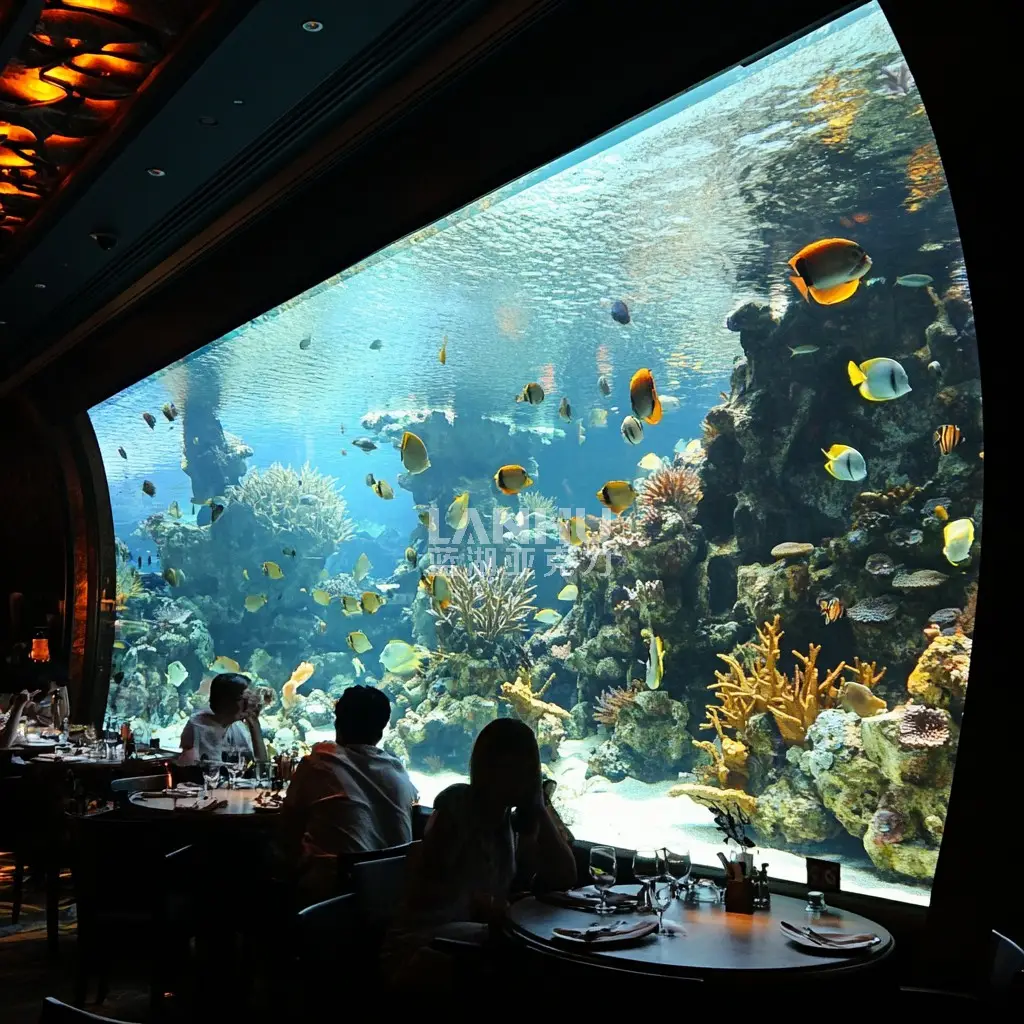Does the transparency of large acrylic boards decrease with thickness?
First of all, from the perspective of material properties, high-quality acrylic sheets can achieve a light transmittance of approximately 92%, approaching that of crystal glass. This high transmittance remains stable over a wide range of thickness. This is because acrylic's inherently uniform structure and has very few impurities, it allows light to travel through it with almost no significant scattering or absorption. Therefore, even sheets tens or even hundreds of millimeters thick remain visually clear and transparent.

In practical applications, increased thickness may result in a slight decrease in transparency. This is primarily due to the following factors:
1. Light refraction and reflection: Thicker boards have more interfaces, resulting in greater reflection losses when light passes through them.
2. Color accumulation effect: Even the most transparent materials absorb certain wavelengths of light slightly. This absorption is amplified with increasing thickness, potentially resulting in a slight tint (such as a pale blue or pale yellow hue).
3. Processing and splicing craftsmanship: Improper hot bending, polishing, or bonding of thick boards can create microscopic lines or bubbles, affecting the visual effect.

In the manufacture of large acrylic aquariums, this issue can be minimized by selecting high-purity cast-grade acrylic, precisely controlling the processing technology, and using high-quality splicing adhesives. For example, when Lanhu Aquarium Engineering manufactures aquariums over 300mm thick, it employs integral thermoforming or on-site seamless splicing to ensure a clear, air-like view.

Thus, theoretically, increasing the thickness of the acrylic should not significantly reduce its transparency. As long as the raw material quality and processing are in place, large, thick-board aquariums can still present a crystal-clear, unobstructed view, ensure the viewing experience is not affected.

 EN
EN
 AR
AR
 BG
BG
 HR
HR
 CS
CS
 DA
DA
 NL
NL
 FI
FI
 FR
FR
 DE
DE
 EL
EL
 HI
HI
 IT
IT
 JA
JA
 KO
KO
 NO
NO
 PL
PL
 PT
PT
 RO
RO
 RU
RU
 ES
ES
 SV
SV
 CA
CA
 TL
TL
 IW
IW
 ID
ID
 LV
LV
 LT
LT
 SR
SR
 SK
SK
 UK
UK
 VI
VI
 ET
ET
 GL
GL
 HU
HU
 TH
TH
 TR
TR
 FA
FA
 AF
AF
 MS
MS
